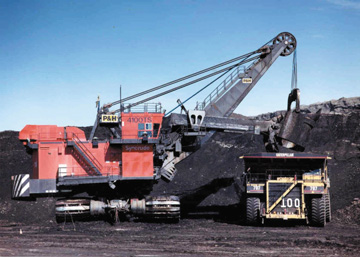
Geotimes Home | AGI Home | Information Services | Geoscience Education | Public Policy | Programs | Publications | Careers

 Estimates of Canada’s
oil reserves jumped from 4.9 billion barrels to 180 billion this year, making
the country the second-largest oil reserve in the world, according to an annual
survey conducted by the Oil and Gas Journal. The change catapults Canada ahead
of Iraq in terms of reserve size, and decreases OPEC’s share of the world’s
oil reserves by more than 10 percent.
Estimates of Canada’s
oil reserves jumped from 4.9 billion barrels to 180 billion this year, making
the country the second-largest oil reserve in the world, according to an annual
survey conducted by the Oil and Gas Journal. The change catapults Canada ahead
of Iraq in terms of reserve size, and decreases OPEC’s share of the world’s
oil reserves by more than 10 percent.
 |
Geotimes Home | AGI Home | Information Services | Geoscience Education | Public Policy | Programs | Publications | Careers |